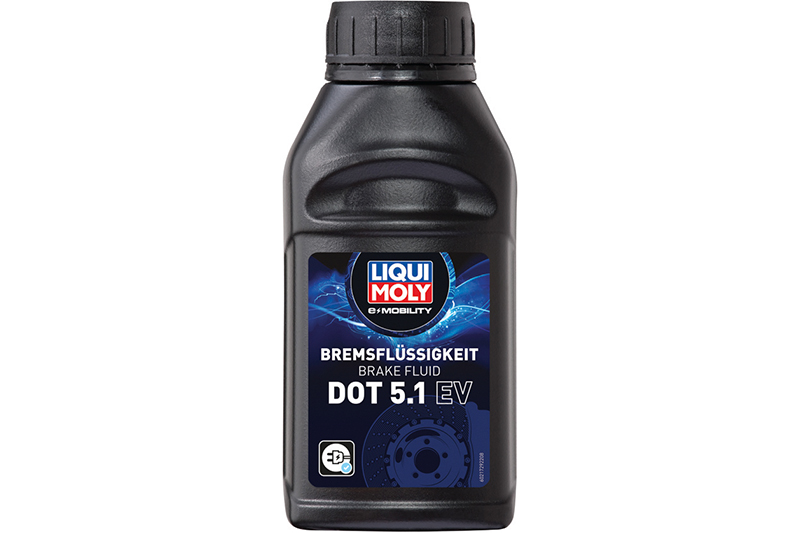
In this series of articles, Liqui Moly investigates common vehicle problems and proposes a solution. This month it looks at EV Brake Systems.
Problem: EV Brake Systems
Solution: Liqui Moly’s Brake Fluid DOT 5.1 EV
Assessment: There are a number of reasons why brake systems are more demanding for vehicles that are partly or system is installed near the brake system and is not sufficiently purely electrically powered, the first one being corrosion protection. This spot corrosion, as it’s known, occurs because the electric motor also acts as a brake and uses it to generate energy for the battery, the mechanical brake system being used less frequently. However, the brake system still works hard as these vehicles are generally heavier than ICE vehicles and rapidly reach high speeds from which they also have to be braked abruptly in the event of danger. As a result, the brakes quickly become very hot. Brake fluids such as the new DOT 5.1 EV need to be effective even when the brake system is hot and therefore require a high dry and high wet boiling point. The next property is the lowest possible electrical conductivity which plays a role if an electrical shielded. As with the wireless, inductive charging, electrical voltages can be induced in the brake system which can decompose the brake fluid or promote corrosions. The last point of interest is viscosity. The lower the viscosity, the faster the engine is fully oiled. A low-viscosity brake fluid transmits the braking pulses in the system more quickly, the electronic driver assistance systems such as ABS or ESC function better and respond even more sensitively.









